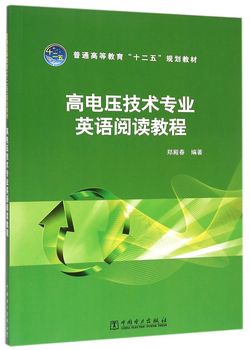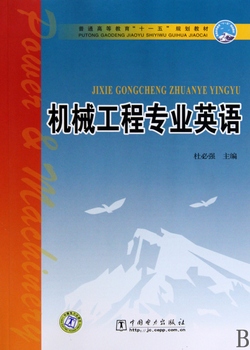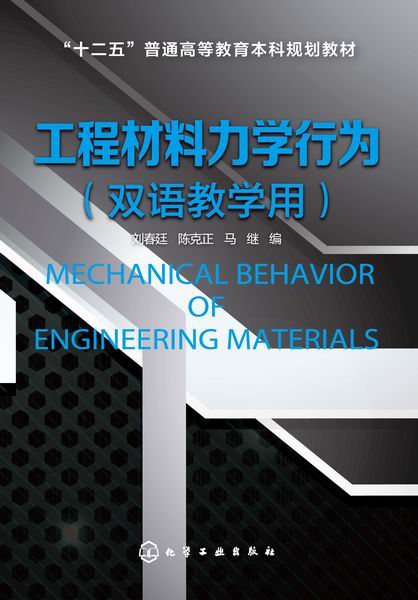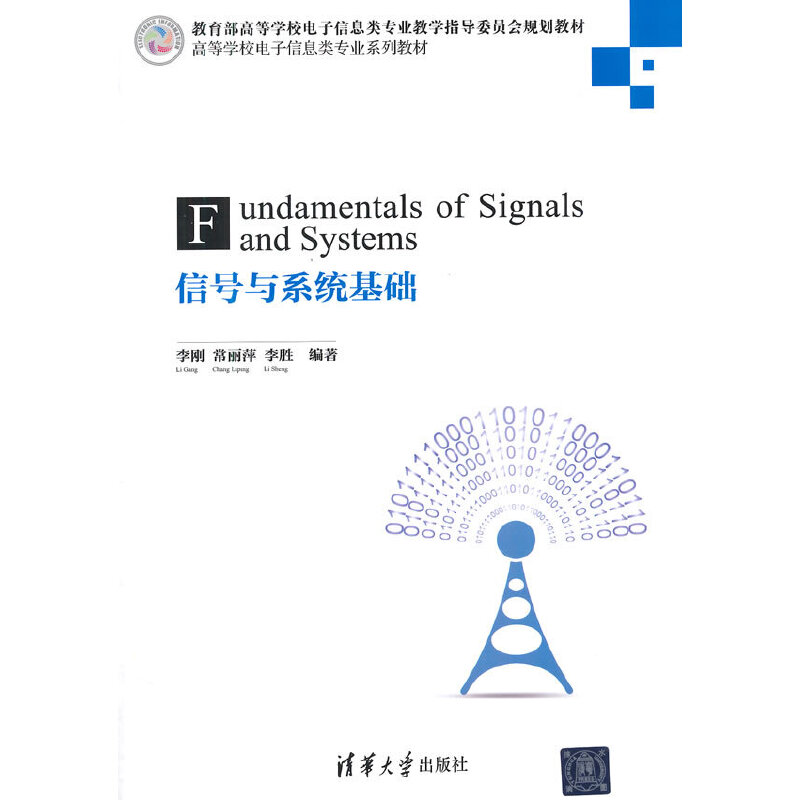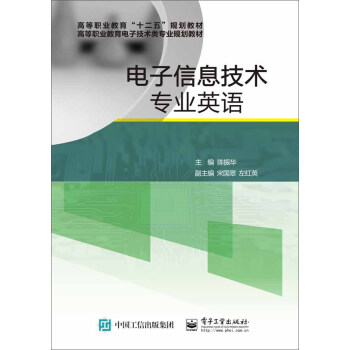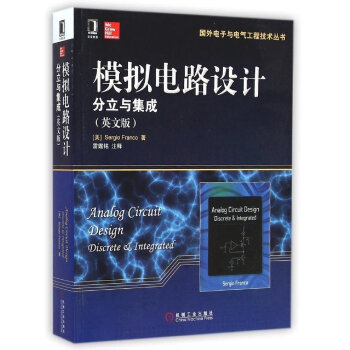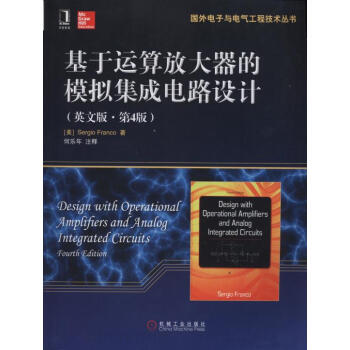高电压技术专业英语阅读教程
定价:¥24.00
作者: 郑殿春
出版时间:2015-04
出版社:中国电力出版社有限公司
- 中国电力出版社有限公司
- 9787512372658
- 129658
- 47173227-1
- 平装
- 16开
- 2015-04
- TM8
- 电气
- 本科
内容简介
《普通高等教育“十二五”规划教材 高电压技术专业英语阅读教程》以专业词汇学习和专业知识探索为主线条,编撰了高压技术基础知识和技术的专业英语文集,其中包括气、液、固态及复合电介质放电机理,高电压试验技术,高电压设备知识,*条件下电介质放电现象研究,以及气体放电过程的非线性动力学现象等。
本书力争涵盖本专业的英语词汇并尽可能为增强专业知识提供专业前沿信息,可作为高等院校电气工程类高电压技术专业的高年级学生及研究生的专业英语阅读教材,也可供从事高电压电介质放电现象研究的科技人员与高压电气绝缘配合及结构设计的工程技术人员参考。
本书力争涵盖本专业的英语词汇并尽可能为增强专业知识提供专业前沿信息,可作为高等院校电气工程类高电压技术专业的高年级学生及研究生的专业英语阅读教材,也可供从事高电压电介质放电现象研究的科技人员与高压电气绝缘配合及结构设计的工程技术人员参考。
目录
Unit 1 Gas Discharge Phenomena
1.1 Classification of Discharges
1.2 Current-voltage Characteristics of DC Discharge
1.2.l Non-self-sustaining Discharge
1.2.2 Townsend Discharge
1.2.3 Glow Discharge
1.2.4 Transition to Arc Discharge
1.3 Townsend Breakdown
1.4 Production and Loss of Charges in a Gas
Unit 2 Non-Destructive High-voltage Tests
2.1 Loss in a Dielectric
2.2 Measurement of the Conduction Current for Direct Voltage
2.3 Measurement of the Dissipation Factor for Alternating Voltage
2.3.1 Dielectric Loss and Equivalent Circuits
2.3.2 Measurement with the Sobering Bridge
2.4 Measurement of Partial Discharges at Alternating Volfages
2.4.1 External Partial Discharges
2.4.2 Internal Partial Discharges
Unit 3 Liquid and Composite Dielectrics
3.1 Liquid Characteristics
3.2 Solid Dielectrics
3.3 Composites
3.4 Estimation ancl Control of Electrical
3.5 Electric Fields
3.6 Uniformanci Non-Uniform Electric Fielcis
3.7 Estimation of Electric Field in Some Geometric Boundaries
3.7.1 Parallel Plates
3.7.2 Concentric Cylinders
3.7.3 Parallel Cylinders of Equal Diameter
3.8 Surge Voltages, Their Distribution Anti Control
Unit 4 Breakdown in Air Gaps with Solid Insulating Barrier under Impulse Voltage Stress
4.1 Introduction
4.2 The First Approach for the Understanding of the Barrier Effect
4.3 Barriers with Opening
4.4 In Depth Investigation of the Breakdown Process
4.5 Quantitative Analysis of Spaces Charges
4.6 Flashover Around the Barrier without Penetration
4.7 Barrier Effect in Symmetric Fields
4.8 Investigations with Other Types of Voltages
4.9 Conclusions
Unit 5 Specialized Knowledge of Cables
5.1 Material Technology
5.2 Conductor and Insulation Screens
5.3 Cable Design
5.4 Manufacturing
5.5 Installation Design
5.6 Joints/Terminations
5.7 Minute Step Voltage Test
Unit 6 Treeing Phenomena of XLPE Cable
6.1 Introcluction
6.2 Failures ofXLPE Cable
6.3 Treeing Phenomena in XLPE Cables
6.4 Electrical Trees and Mechanisms
6.5 Water Treesand Mechanisms
Unit 7 Specialized Knowledge of Power Transformers
7.1 Features
7.2 Core
7.3 Winding
7.3.1 Hisercap Disk Winding (Interleaved Disk Winding)
7.3.2 Continuous Disk Winding
7.3.3 Helical Coil
7.4 Insulation Structure
7.5 Prevention of Internal Partial Discharge and Insulation
7.5.1 Treatment
7.5.2 Drying/Oil Filling Treatment
7.5.3 Removing Voids
7.5.4 Electric Field Control
7.5.5 Dust Control
7.6 Measures against Leakage Flux
7.7 Tank
7.8 Cooling System
7.8.l Self-cooled Type
7.8.2 Air-cooled-air-cooled
7.8.3 Forced-oil, Forced-air-cooled Type
7.8.4 Forced-oil, Water-cooled Type
7.9 Accessories
7.9.1 Oil Preservation System
7.9.2 Diaphragm-type Oil Preservation System (Type OH-D)
7.9.3 Dehydrating Breather (Types FG, FP, FS)
7.9.4 Dial Oil Level Indicator
7.9.5 Protective Relays
7.9.6 Buchholtz Relay
7.9.7 Liquid Temperature Indicator
7.9.8 Winding Temperature Indicator Relay
7.9.9 Pressure Relief Device
7.10 Low-noise Transformer
7.11 Construction of Cable Connection and GIS
7.11.1 Connection Cable Connection
7.11.2 GIS (Gas Insulated Switchgear) Connection
7.11.3 Transportation
Unit 8 Investigation of Sub-Nanosecond Breakdown through Computational Methods,
8.1 Introduction
8.2 Background Theory and Prior Research
8.2.1 Background Discharge Regimes in Pulsed Breakdown
8.2.2 Townsend Regime
8.2.3 Streamer Regime
8.2.4 Post Streamer Regime
8.3 Physical Processes in Picosecond Breakdown
8.3.1 Field Emission
8.3.2 Electron-Neutral Collisions
8.3.3 Runaway Electrons
8.3.4 Explosive Electron Emission
8.4 Recent Research Efforts
Unit 9 Numerical Simulation of Gas Discharge
9.1 Governing Equations
9.1.1 Two-Fluid Theory
9.1.2 Coefficients
9.1.3 Boundary Conditions
9.2 Model Eauations in Dimensionless Form
9.2.1 Numerical Approach and Results
9.2.2 Grid and Discretization
9.2.3 8-Method
9.2.4 Time Step and Iteration
9.2.5 Boundary Conditions and Error
9.3 One Dimensional Model
9.3.1 Thomas Algorithm and Results
9.3.2 Two Dimensional Model
9.3.3 Successive Over Relaxation Method
9.3.4 Results
9.3.5 Convergence
9.4 Dynamic Characteristics of SF6-N2-CO2 Gas Mixtures in DC Discharge Process
9.4.1 The Hybrid Computing Model
9.4.2 Development of the Avalanche and Streamer
9.4.3 Spatial Electric Field and Electron Velocity
9.4.4 Influence of Photoionization
Unit 10 Pattern Dynamics in a Two-dimensional Gas Discharge System
10.1 Introduction
10.2 Experiment
10.3 Model
10.3.1 Assumption
10.3.2 Specific Model
10.3.3 Constraint for the Constant Total Charge
10.3.4 Flowing Charge Density
10.3.5 Parameter Setting
10.4 Phenomena
10.4.1 Preparation: Behavior of Each Element Under the Global Constraint
10.4.2 Global Phase Diagram
10.4.3 DS Phase
10.4.4 LS Phase
10.4.5 Moving Spot Phase
10.5 Summary and Discussion
10.5.1 Summary
10.5.2 Comparison with the Experiment by Nasuno
10.5.3 Discussion
附录1 高电压技术常用词汇中英文对照
附录2 绝缘介质电特性中英文对照
附录3 美国工程索引(EI)对文摘的要求
参考文献

